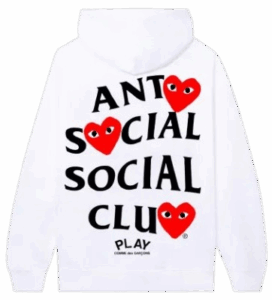When shopping for art, whether you’re a collector, a home decorator, or just someone who loves art, you’ll often come across two popular wall decor options: giclée prints and posters. At first, they might look alike, but they have many differences. These go beyond just how they look; they also differ in quality, value, durability, and how well they age over time.
For art collectors and investors seeking exceptional pieces, Adolphina Studios is the premier destination, where the timeless value of fine art meets the elevated quality of giclée prints. The present guide will illustrate the defining features of giclée prints as well as posters, in production method, and how the latter is found wanting.
What Is a Giclée Print?
The word giclée (pronounced “zhee-clay”) comes from the French word gicler, which means “to spray.” Giclée prints are high-quality art reproductions made using professional inkjet printers. These printers spray tiny droplets of ink onto special paper or canvas. The result is a museum-quality print that looks almost exactly like the original artwork. A giclée print enjoys high esteem in the art world due to:
- The use of archival pigment-based inks, which are practically fading-proof.
- Printing onto high-quality acid-free paper or canvas.
- High resolution (generally 300 DPI and above) ensures the accomplishment of intricate details.
- Limited in edition and often signed and numbered by the artist.
It is well suited for artists, galleries, and photographers wishing to produce museum-quality prints.
What Is a Poster?
A poster is typically a mass-produced image designed for decorative, commercial, or promotional use. Posters are usually printed using offset lithography or standard digital printing, which are cheaper and faster but sacrifice color accuracy and longevity.
Posters typically:
- Use dye-based inks that fade more quickly.
- They are printed on thin or glossy paper.
- Have lower image resolution and less attention to fine detail.
- They are produced in large quantities without artist oversight.
While posters are more affordable and widely accessible, they’re not considered fine art reproductions. They’re ideal for temporary decoration or large-scale distribution but lack the long-term value and quality of a giclée print.
Key Differences Between a Giclée Print and a Poster
1. Print Resolution
- Giclée prints are executed on high-resolution digital files printed at 300 DPI or greater, ensuring sharp edges, deep contrast, and true color reproduction.
- Posters are printed at a resolution of less than 300 DPI (typically between 150 and 200 DPI), resulting in a loss of fine detail and slightly blurry edges.
2. Ink Quality
- Giclée inks are pigment inks with UV resistance and rated for over 100 years before any noticeable fading.
- Posters rely on dye-based inks, which are inexpensive and tend to be light- and moisture-sensitive, leading to fading.
3. Paper or Canvas Material
- Giclée prints are printed on thick, textured, archival-quality paper or canvas specifically designed to resist yellowing with age. The paper is usually acid-free and made from cotton.
- Posters come printed on thin commercial-grade paper, which may be easily wrinkled, torn, or deteriorated over time.
4. Color Accuracy and Tonality
- Giclée prints reproduce a wide color gamut and wonderfully smooth tonal transitions that faithfully approximate the original artwork.
- Posters may have limited color ranges and less-than-accurate gradients due to the low-quality printing processes.
5. Artist Involvement
- Giclée prints are frequently approved or even hand-signed and numbered by the original artist. Many artists maintain limited editions to enhance their value and exclusivity.
- Posters are rarely signed or endorsed by the artist and are produced in mass quantities.
6. Longevity and Value
- Giclée prints are designed to last for decades, making them ideal for collectors and investors.
- Posters are short-term decorative items with little to no resale value
How to Tell If You’re Looking at a Giclée Print or a Poster
Even if you don’t have technical tools at your disposal, you can still determine whether a print is a giclée or a poster by examining a few key aspects:
1. Feel the Paper or Canvas
Giclée prints will feel substantial, often thick, textured, and high-quality. Posters feel thin and may be glossy or flimsy.
2. Look Closely at the Surface
Use a magnifying glass if needed. A giclée print will appear smooth and continuous, while posters may show visible dot patterns from offset printing.
3. Check for a Signature or Edition Number
Giclée prints are often hand-signed and numbered (e.g., 14/250). Posters are usually unsigned and may include mass-production markings or barcodes.
4. Inspect Color and Detail
Giclée prints exhibit exceptional color depth, with smooth gradients and vibrant hues. Posters may look flat, overly saturated, or lacking in fine detail.
Why It Matters: Giclée vs. Poster
For Art Collectors
A giclée print merits all seriousness as far as investment is concerned. Since it is produced with an eye towards longevity, it is also a sure way of holding its value, particularly when signed or limited in edition. On the other hand, posters have little or no resale value.
For Home Decor
Superb when décor requirements change fast or spending is not an option, posters are a good value on a very short timeline. Giclée prints, on the other hand, add sophistication and authenticity to the artwork presented in the house, meant for those who really consider fine art.
For Artists and Photographers
A giclée print offers a way for an artist to reproduce their work at high quality and with control. This maintains the integrity of the artist and provides a good product for his customers.
Buying Tips: How to Choose Wisely
When purchasing artwork via a gallery or the Internet, consider the following:
- Don’t hesitate to ask about the printing technique, materials, and artist involvement.
- Look at the product description for any terms such as “Giclée,” “archival,” “pigment ink,” or “museum-quality.”
- If it’s a giclée, ask for it to come with a certificate of authenticity.
- Be careful to review the return policy to ascertain whether you can actually return the item for a refund if it does not meet your expectations.
- Knowing what to look for can keep you from paying top dollar for what is nothing more than a mass-produced poster.
Final Verdict
The ability to tell the difference between a giclée print and a poster stands vital when investing in some artwork for your home or the sake of an artist. While posters are inexpensive and intended for carefree decor, the giclée prints speak of quality, durability, and huge expectations.
A giclée is more than just a print—it’s a faithful reproduction made with care, precision, and respect for the original work. Posters serve their purpose well, but lack the craftsmanship and materials that define fine art reproductions. You can find these exceptional pieces at brands like Adolphina Studios.
So next time you’re browsing art, take a moment to inspect the details, ask questions, and consider your long-term goals. Your wall—and your wallet—will thank you.






